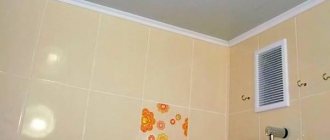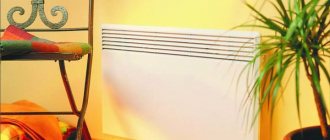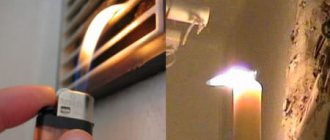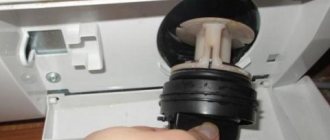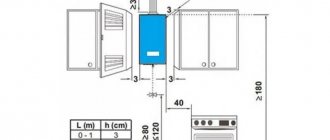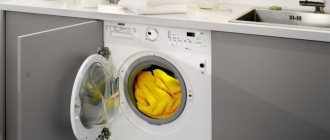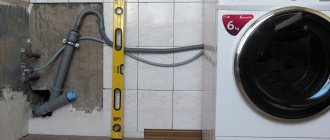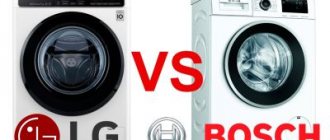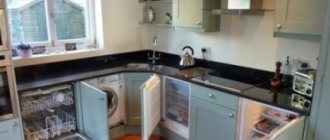How does the air exchange problem occur?
In modern multi-storey buildings, forced ventilation is installed at the design and construction stage. The draft is created by a powerful fan installed on the technical floor or on the roof. Residents are not required to install additional equipment in apartments.
In most apartment buildings, ventilation is arranged differently.
Air flows in the exhaust ventilation of an apartment building
In the walls separating the apartments from the entrance there is a ventilation shaft with openings leading into the living quarters. The air flow to extract odors and moisture is created by the difference in temperature and atmospheric pressure on the first floors and on the roof. The air flow rises up, sucking in the smells of their toilet, bath and kitchen. The flow of fresh air into the apartment occurs through loosely fitted wooden window frames, vents, entrance doors, and in modern houses through valves in plastic windows.
The human factor interferes with the proper operation of ventilation:
- Clogging or blocking of ventilation ducts during construction (repair) work;
- Installation of cheap plastic windows without supply valves;
- Installation of doors with seals;
- Placement of powerful hoods by neighbors at the entrance, disturbing the balance of air flows;
- Rare preventative cleaning of ventilation shaft ducts by the management company.
Insufficient ventilation results in:
- Increased humidity in the premises;
- The appearance and proliferation of mold and mildew are the causes of dangerous allergic diseases. The finish quickly takes on an unsightly appearance;
- In severe cases, reverse draft appears, and odors from the mine enter the living space.
Mold on the ceiling due to insufficient ventilation
Installing exhaust fans in the bathroom is one way to solve the problem. Often, coming to an agreement with all the neighbors and returning the ventilation to its original form is a difficult task.
How to check traction
You can check the draft from the apartment in two ways:
- The door to the bathroom is opened, and a lit lighter or match is brought to the ventilation hole. If the flame leans noticeably towards the hole, there is draft.
Checking draft with a lighter
- An unfolded napkin is brought to the ventilation hatch. If it is attracted and stays on the hole, there is also traction.
Important! When checking the draft, the sealed bathroom door must be open. This will ensure a natural flow of air from other rooms in the apartment.
Installation of an exhaust system in the bathroom
An exhaust device for a bathroom is nothing more than a simple ventilation system with a forced operating principle. The main parts of the ventilation system are two components - an air duct connecting the room with the central ventilation riser and an electric fan. But, despite the simplicity of the design, it fully copes with its responsibilities.
If we talk about a standard ventilation system , then it works on the supply and exhaust principle and does not require the installation of a fan. In this case, very often there is simply no second air duct, and the flow of fresh air will be provided due to the natural ventilation of the room through open windows or doors.
I would like to note that recently, due to the popularity of installing metal-plastic structures with a high degree of tightness, the air duct, the main function of which is to remove air from the bathroom, works in the opposite direction, drawing in unpleasant odors from the central exhaust riser.
This can also occur due to partial or complete blockage of the ventilation ducts . This is mainly characteristic of apartments in high-rise buildings. That is why many homeowners install forced air removal systems in their bathrooms.
Types of bathroom fans
In bathrooms, three types of devices are used based on the principle of operation:
- axial;
- centrifugal;
- combined.
Axial
Air flows in this type of device are moved by the rotation of impeller blades, similar to a propeller or an airplane propeller. The air moves along the axis of the electric motor, thereby cooling the motor.
Axial fans for hoods
Advantages of axial fans:
- low noise level during operation, since the design allows for precise balancing of parts;
- efficiency.
Basically, the range is designed for small or medium-sized bathrooms. The housings of household appliances are made of plastic, which allows them to be given designer shapes. The parts do not require anti-corrosion protection.
The use of axial fans in domestic conditions is limited by low air exchange performance and efficiency, which does not allow the device to be used in large rooms.
Important! The air flow creates turbulence - this limits the length of the air ducts (if used). The length of the horizontal section of the ventilation duct should not exceed 2.5-3 meters.
Radial
The radial, or centrifugal, type is used for air exchange in large bathrooms and combined bathrooms.
The air flow in such devices moves in a direction transverse to the engine.
Radial fan design
The efficiency of centrifugal fans is higher than that of models of similar power axial devices. The productivity and efficiency of the devices is significantly higher. At the same time, complaints are often made against such models due to increased noise.
Important! The fans presented for sale comply with the parameters established by the noise rules, but in some cases it may disturb users.
Combined
Combined type devices combine in their design the principles of previously discussed devices, and, accordingly, their advantages and disadvantages.
Types of exhaust fans
There are two types of exhaust fans: axial and centrifugal.
- Axial fans are best suited for small spaces. Such fans are used in exhaust ducts up to two meters. If such a fan is installed in an exhaust duct up to five meters, the efficiency of the hood will be impaired.
- Centrifugal fans are used up to five meters and above.
According to the installation method, fans are:
- Wall-mounted.
- Ceiling.
- Wall-ceiling (can work in both positions).
- Duct.
In order to calculate the efficiency of the fan, you need to refer to a special formula. The formula is very simple - m3/hour (fan characteristic) is multiplied by the amount of air (per hour) in your room.
Typical air measurements table:
| Private sector: | |
| Bathrooms and showers | 3-8 m3/hour |
| Domestic toilets | 3-10 m3/hour |
| Domestic kitchens | 10-15 m3/hour |
| Living rooms | 15-20 m3/hour |
| Bedrooms | 2-4 m3/hour |
| Garages | 6-8 m3/hour |
| Commercial premises: | |
| Conference rooms | 4-8 m3/hour |
| Offices | 6-8 m3/hour |
| restaurants and bars | 3-10 m3/hour |
| School classes | 2-3 m3/hour |
| Dining rooms | 8-12 m3/hour |
| The shops | 8-10 m3/hour |
| Changing rooms with showers | 15-20 m3/hour |
| Public toilets | 10-15 m3/hour |
| Hospital wards | 4-6 m3/hour |
To correctly calculate the amount of air driven, let's consider an example. Let the room have dimensions of 2 meters wide, 2 meters long and 2.5 meters high (bathroom). The volume of this room is 10 m3. We apply the formula 10 * 8 = 80 m3/hour.
How to choose according to technical parameters
Before going to a shopping center or online store, you need to decide on the fan parameters that will meet the requirements for use in a particular room.
Important device parameters:
- air exchange;
- maximum noise level.
Both characteristics usually depend on engine power.
Air exchange
Acceptable humidity in the room can be maintained if the air changes at a rate of 6-8 room volumes per hour, when using the bathroom with a family of 4 people.
You can find out the volume of a room by multiplying the geometric dimensions. A room of 2.2x2.5x2.7 m has a volume of 14.8 m³. Therefore, for an eight-fold air exchange, a device with a capacity of 120 m³ is suitable.
Attention! Fans provide air exchange only when the power supply is connected. When the network is turned off, the blades prevent air movement. The problem is eliminated by installing an exhaust device whose geometric size is smaller than the opening of the ventilation duct, or by leaving a gap between the wall and the housing.
Noise level
According to SanPin standards, in apartment buildings it is allowed to install devices with a noise level of up to 40 dB. The fan must meet these characteristics to avoid misunderstandings with neighbors and, first of all, for the comfortable rest of family members.
Power consumption
For large families, such a characteristic of the exhaust device as power consumption is important - after all, the fan will remain running for a long time. On average, fans with a capacity of up to 150 m3/hour consume from 10 to 25 W/hour. The characteristics can be found on the packaging and in the technical data sheets of the purchased devices.
Selection by technical parameters
Like any technical device, an exhaust fan for a bathroom must be selected primarily according to technical parameters. It’s worth saying right away that the cases are usually made of plastic, and the case itself is waterproof (minimum protection class is IP 24). The shape and type of grille are arbitrary; the body color is most often white, but there are also colored ones.
Hoods for bathrooms and toilets can be different in shape
In addition to external signs, we select the diameter of the exhaust fan outlet pipe. It is selected depending on the cross-section of the air duct (it is better not to narrow it, as the air exchange will decrease).
Air exchange
You need to choose an exhaust fan for the bathroom based on the volume of the ventilated room and the air exchange rate (as prescribed by sanitary standards). For bathrooms, the recommended frequency is 6 to 8 air volumes per hour. For families, an 8-fold exchange is considered; for 1-2 people, 6-7 times is enough.
For example, a bathroom has dimensions of 2.2 * 2.5 * 2.7 m. We multiply all the numbers to find out the volume, we get 14.85 m3. Rounding up, we get that the volume of the bathroom is 15 cubic meters. We will calculate the eightfold exchange: 15 m2 * 8 = 120 cubic meters/hour. That is, when selecting a fan’s performance, its performance should not be less than 120 cubic meters per hour.
Example of brief technical characteristics of a bathroom exhaust fan
Noise level
The second point that you need to pay attention to when choosing an exhaust fan for the bathroom is the level of noise produced. If the fan operates only during the day, the noise produced should be around 30-35 dB. It's not very loud and doesn't interfere with other noise. If the fan in the hood will operate at night, the noise level should be less than 30 dB, and preferably 20-25 dB.
The quietest bathroom fan should be found among radial models. Axial ones, due to the transmission of vibration from the motor, produce louder sounds, but there are models in which these vibrations are minimized by using special vibration-damping pads. Another way is to use rolling bearings. Such axial fans for the bathroom produce just 22-23 dB, which is very little.
| Name | Installation type | Working mechanism | Air exchange (performance) | Power consumption | Noise level | Additional functions | Rotational speed | Price |
| Vents 100 MAT | overhead | axial | 98 cu. m/hour | 18 W | 34 dB | timer, shutdown delay | 2300 rpm | 30-35$ |
| Electrolux EAF-100TH | overhead | axial | 100 cu. m/hour | 15 W | 33 dB | humidity sensor | without adjustment | 30-35$ |
| VENTS iFan | overhead | axial | 106 cu. m/hour | 4.56 W | 31 dB | remote control, humidity sensor | step adjustment | 75- 85 $ |
| Soler & Palau SILENT-100 CZ | overhead | axial | 95 cu. m/hour | 8 W | 27 dB | mechanical control | without adjustment | 25-39$ |
| Blauberg Sileo 125 T | overhead | axial | 187 cc m/hour | 17 W | 32 dB | timer, check valve | without adjustment | 45-50 $ |
| Systemair CBF 100 | overhead | radial | 110 cu. m/hour | 45 W | 45 dB | mechanical control | without adjustment | 65-75 $ |
| Systemair BF 100 | overhead | axial | 85 cu. m/hour | 20 W | 41 dB | mechanical control | 2400 rpm | 32-35 $ |
| Systemair IF 100 | duct | axial | 87.1 cu. m/hour | 14 W | 44 dB | 2432 rpm | 28-35 $ | |
| MARLEY MP-100S (SV-100) | overhead | from 10 to 83 m³/h | 1.1 W to 4.1 W | from 10 dB to 38 dB | electronic control | smooth adjustment | 209-225 $ | |
| VENTS Quiet 100… (Vents Quiet 100) | overhead | silent | 97 cu. m/hour | 7.5 W | 25 dB | check valve, rolling bearing | 2300 rpm | 28-35 $ |
| Vents 125 Quiet V (125 Quiet V) | overhead | silent | 185 cc m/hour | 17 W | 32 dB | check valve, rolling bearing | 2400 rpm | 42-50$ |
| Domovent VKO 125… | duct | axial | 185 cc m/hour | 16 W | 37 dB | protection against overheating and moisture | without adjustment | 7-10$ |
Also pay attention to such a point as the material of the air duct. The fan itself may create little noise, but the metal duct may make noise as air moves through it. Therefore, when installing a ventilation system, it is advisable to use plastic. If you already have a metal box, you can reduce the noise level by covering it with soundproofing materials. The second solution is to sew it into a box and fill the gaps with porous soundproofing material. Standard sound insulation made from mineral fibers is best suited for this. Polyurethane foam, of course, is convenient to use, but its soundproofing characteristics are very low. Polystyrene foam and polystyrene foam are not very good in this regard either.
Power consumption
Another parameter is power consumption. The lower this parameter, the less you will have to pay for electricity. From this point of view, axial fans for bathroom hoods are more economical. For a set of high efficiency with low electricity consumption, they provide significant air exchange. Radial ones are less profitable in this regard: with equal performance, they spend 3-4 times more electricity, but at the same time the air is transmitted over a greater distance.
Powerful duct fan
It is also worth remembering that the fan’s performance (the amount of air moved per unit of time) depends on the power consumption. This parameter is also influenced by the shape of the impeller and other design features (for example, the presence of rolling bearings), but the larger volumes of air need to be pumped, the more powerful the exhaust fan in the bathroom is required.
Additional options
It is important to consider additional functions when choosing a model.
Constant rotation mode
The mode in which the impeller rotates constantly is convenient for frequent use of the bathroom. In standby mode, the fan rotates at a slow speed, creating no noise and saving energy. Based on a signal from a hydrostat - built-in or external - productivity increases and air exchange accelerates.
Timer
An automatic switch (timer) is useful in a family with small children. The device will turn off the device after a specified time, and also will not allow the fan to work in an empty apartment.
Hydrostat
The humidity sensor automatically turns the hood on and off, maintaining optimal air humidity.
hydrostat (humidity sensor) automatically turns the fan on and off to maintain optimal humidity levels;
Motion Sensor
The device automatically turns on the fan while a person is present in the room. Often the option works in conjunction with a timer. In this case, the device will turn off after a specified time, after the room has become vacant.
Important! Most models allow you to set the delay time for timers and motion sensors manually. How to do this is written in the operating instructions.
Check valve in design - is it necessary or not?
Irregularities in the operation of ventilation lead to reverse draft - an unpleasant smell from the mine enters the premises of all apartments at the entrance. You can reduce the consequences by purchasing a fan with a check valve.
Check valve in fan
Depending on the control method, valves can be manual or automatic. The latter are considered more convenient - they block the exhaust hole immediately after the impeller stops rotating.
How to choose a bath fan
When choosing a ventilation device for a bath, you must first consider the following factors:
- square meters of the room for which the fan will be purchased;
- number of people living in the apartment/house.
A device with a function for adjusting power, and, if necessary, stopping it completely will help you save on electricity. Since if there are no residents in the house during the day, it makes no sense to keep the hood on all the time.
An excellent option to purchase would be a fan with a built-in timer and humidity sensor. It is convenient because you do not have to control how it turns on and off. As soon as the air humidity in the bathroom rises to a certain level, the device will turn on itself and turn off after exactly 30 minutes.
It wouldn’t hurt if the fan was equipped with splash protection. After all, splashes of water as a result of using the bathroom can damage the device.
If you live in an apartment building, then you should think about purchasing a fan with a check valve. After all, in such houses there is one exhaust system for several apartments. In this case, the valve on the fan will prevent the unpleasant smell from the apartments located below and will not allow it to spread throughout yours.
To avoid being disturbed by the hum while the appliance is operating, you can purchase a silent bathroom fan. And the air in the bathroom is always clean and there is no extraneous noise.
Silent fan design
The reasons for loud fan operation are the movement of air flow, noise from rotating mechanisms, and improper installation of the device.
The faster the air flow, the louder the sound accompanying this process will be.
Important! Use fans whose outlet openings are similar in size to the shape of the exhaust ducts. A large selection of equipment in stores helps to do this.
In the electrical appliance itself, the motor, housing parts, and bearings make noise.
When choosing a device, pay attention to the reliability of the motor mounting and the presence of rubber bushings at the installation sites.
When examining the body, preference is given to models in which it is solid. The minimum number of parts is an advantage when purchasing.
Products from branded manufacturers are equipped with ball bearings, which are silent during operation. In cheap models, the impeller shaft rotates in plain bearings - bronze or brass bushings. This design quickly leads to vibrations and noises that gradually become unbearable.
Important! Fans for installation on horizontal surfaces are equipped with thrust bearings that are resistant to forces applied in all planes.
Rating of manufacturing companies
Among the manufacturers of exhaust hood equipment for individual housing, the leading companies are:
- Motors JSC. Bulgaria;
- Era LLC, Russia;
- Soler & Palau, Spain;
- Elicent, Italy;
- CATA Electrodomesticos SL, Spain.
Top selling models
In small and medium-sized bathrooms, axial-type models are installed - low noise and energy efficient.
| Model | Noise, dB | Productivity, m3/h | Power | Possible additional options (see model description) | Average price, rub. |
| SILENT-100 CZ | 26,5 | 95 | 8 | Check valve, ball bearings, cord switch, timer, hydrostat. | 2000 |
| Elicent E - Style 100 PRO | 32 | 95 | 14 | Check valve | 1500 |
| Motors mm-100 | 36 | 60 | 16 | Check valve. | 2100 |
| Electrolux Rainbow EAFR-100 | 33 | 70 | 15 | Check valve, bearing. | 3000 |
| Soler&Palau SILENT 100 DESIGN 3C | 25 | 95 | 8 | Timer, bearing, check valve | 5000 |
Powerful fans for a large bathroom
To maintain humidity in a large bathroom, powerful fans are suitable.
Model Standard 4ETF
The Standard 4ETF model, Era LLC, is capable of providing air exchange up to 100 m³/hour. There is a built-in photo timer that is triggered by turning on the light in the bathroom.
Electrolux Premium EAF-150 is a device with a capacity of up to 320 m³/hour. 25 W motor. Installation in any plane is possible. The noise level of 35 dB is due to the installation of a powerful engine, which, however, is compensated by the short air purification time when turned on.
EBB-250 NS, manufacturer Soler & Palau. Centrifugal type of devices for large-volume bathrooms and combined bathrooms. Two-speed motor, air exchange up to 270 m³/hour.
Main types of exhaust fans
I would like to start with the fact that all exhaust devices are divided into types - standard and automatic . However, the difference between such devices is that automatic hoods operate practically without human intervention.
- A simple standard exhaust system consists of an ordinary electric fan placed in a tubular housing. In this case, it is turned on thanks to a separately installed switch or a button built into the housing. Very often in practice, the hood is connected to the button for turning the lighting on and off in the room. However, this approach to the matter can hardly be called correct, since exhaust air will be removed only when a person is in the bathroom. But very often this time is not enough for the moisture from the room to completely evaporate. Therefore, it is important to install a separate switch for the fan.
- An automatic hood, unlike a conventional one, is distinguished by a built-in electronic unit that controls the operation of the fan. This ventilation system has several operating modes and is equipped with a timer. In more expensive models, sensors are installed to control the level of humidity in the room. If the moisture level exceeds the permissible parameters, the fan automatically turns on, and after the humidity normalizes, the device turns off.
In addition, both types of bathroom exhaust devices can be equipped with additional functions. Also, some models are equipped with a check valve that prevents air from the main air duct from entering the room. This is especially true in multi-storey buildings, in which not entirely pleasant odors from neighboring apartments can enter the bathroom.
Which model to buy
Reminder for choosing an exhaust fan (what to look for):
- Correspondence of the air exchange characteristics to the size of the bathroom;
- Selection of model according to installation location (duct, ceiling, overhead);
- Match the size of the fan outlet to the size of the hole in the wall;
- Positive customer reviews on the Internet;
- The build quality and noise level can be assessed at a stand in a shopping center.
In a hardware store, models are displayed on display racks where you can see them in action. If the exhibition copy is noisy or vibrates strongly, refuse to purchase. Check the build quality of the device - there should be no noticeable play in the fastening of all parts.
How to install correctly
Productivity, efficiency and noise during operation depend on the correct installation of the exhaust device.
Installation in channels
Often, apartments of modern construction are equipped with ventilation ducts for ventilation of all rooms. Replacing and installing an exhaust fan in such cases is not difficult. Measure the diameter or geometric dimensions of the air duct and select the appropriate fan, which is secured using the clamps included in the kit.
Duct fan installation
Installation in exhaust openings
For installation in exhaust hatches you will need:
- fan;
- drill with drill bits for concrete;
- self-tapping screws with dowels;
- silicone sealant;
- electrical wires and switch;
- Screwdriver Set;
- ladder.
The work is performed in the following sequence:
- Prepare a ventilation hole. Dismantle the old decorative grille. Clean the installation site from dust, dirt and the wall around the hatch. Free the hole from foreign objects, remove fatty deposits and dirt to the possible depth.
Prepared location for fan installation
- Expand the seat using a perforator or reduce it using an alabaster (gypsum) solution, bringing the dimensions as close as possible to the fan outlet.
- If the size of the opening allows, use a device with an additional grille through which the exhaust occurs even when the power supply is turned off.
- Connect the electrical wiring.
Important! The bathroom is a high-risk room. The wiring is carried out in grooves or dielectric cable channels.
Fan installation
Fan installation algorithm:
- Remove the front panel from the device. Under it you can see holes for mounting on the surface and terminals for connecting the power supply.
Fan with cover removed, mounting holes and terminals visible
- Mark the holes for fastening.
- Drilling the walls (suspended ceiling).
Important! To drill ceramic tiles, special drills for ceramics and glass are used. The impact mode on a rotary hammer (drill) is not turned on. This will prevent the enamel from chipping.
The use of mounting adhesive is not advisable - during repairs it will be impossible to remove the fan without damaging the housing.
- Before installing the joints, it is recommended to treat them with silicone sealant with antimicrobial and anti-mold additives.
- After connecting the power, install a decorative grille.
